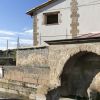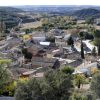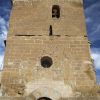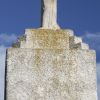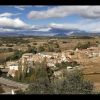The municipality of Lascellas-Ponzano welcomes visitors to Somontano as they cross into the territory over the huge ravine carved by the power of the River Alcanadre.
The course of the river in this area is boxed in by the cliffs of the canyon, making it impossible to access its waters for irrigation. Because of this the inhabitants have traditionally cultivated crops that do not need irrigation such as cereals and, more recently, vines.
However, man’s difficulty in reaching the water has favoured the presence of birds of prey, many in danger of extinction, such as the Egyptian Vulture, the Golden Eagle and the Eagle Owl; jewels of nature that fly undisturbed in the skies of Somontano.
Lascellas is well known for a workshop that makes tower clocks, many of which have traditionally marked the rhythm of life in the villages in Somontano. More recently it has seen the opening of wineries that produce wine under the D.O. Somontano label.
Although the parish church was renovated in the 18th century it has medieval origins, which are apparent through the building; outside they can be seen in the rotundity of the walls and the modillions that supported the original cornice and inside they are revealed in the pointed barrel vault covering the main nave. The main doorway displays a series of astral symbols that were typical on civil buildings throughout the 18th century.
The San Miguel chapel sits on the outskirts of the town. Early Gothic in style it has a rectangular layout and flat east end and the wooden roof is supported by pointed arches with a thick, square profile. The entrance doorway is decorated with diamond points. Next to the livestock track that ascends towards the Pyrenees there is a small 18th century chapel dedicated to San Antón, the patron saint of domestic animals who is also strongly linked with pastoral traditions. It provides a magnificent viewpoint over the surrounding countryside. As the seasonal migration of livestock and shearing of sheep lessened in importance, the chapel was abandoned and left almost in ruins. Medieval in origin and altered in the 16th and 17th centuries, it has recently been renovated and the livestock track is now used frequently by cyclists and walkers.
The 8th of December is the date of the Procesión de los Descalzos (procession of barefoot people.) This traditional pilgrimage was originally a way of thanking the Virgin Mary for saving the village from a plague that had cut it off from other villages.



